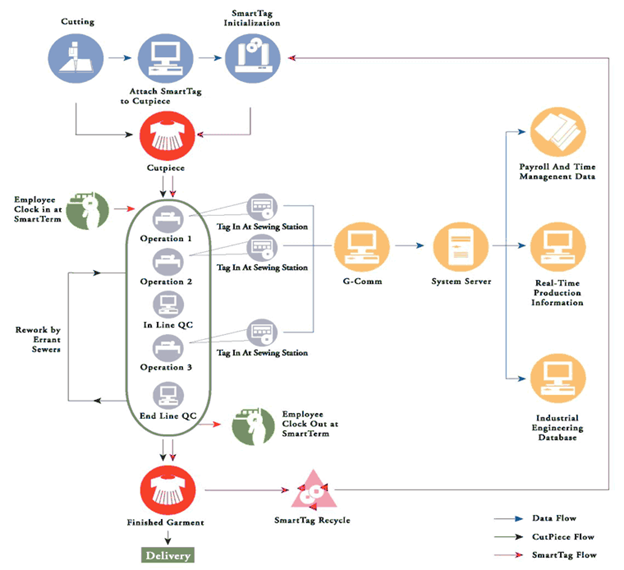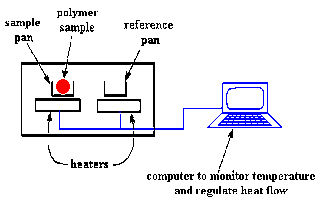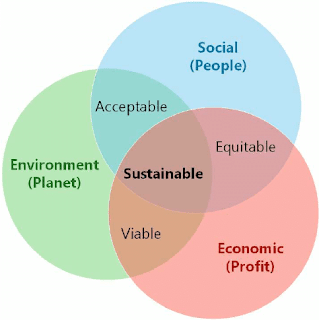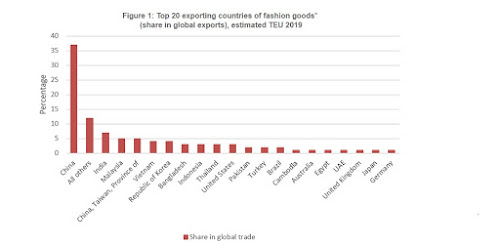RFID stands for Radio Frequency Identification Device. It is an automatic identification technology whereby digital data encoded in an RFID tag or smart label is captured by a reader using radio waves. In simpler terms, it is similar to bar code technology but uses radio waves to capture data from tags, rather than optically scanning the bar codes on a label. It does not require the tag or label to be seen to read its stored data. It is one of the key characteristics of the RFID system.
How RFID works?
RFID systems consist of three basic
components:
components:
1. A tag (also called a transponder)
2. An interrogator (a reader or a
read/write device) and
RFID tags consist of an integrated circuit
(IC) attached to an antenna, i.e. typically a small coil of wires covered with
some protective packaging (like a plastic card) as determined by the
application requirements. Data is stored in the IC and transmitted through the
antenna to a reader. RFID tags are either Passive (no battery) or Active (self-powered
by a battery). Tags also can be read-only (i.e. stored data can be read but not
changed) or read/write (stored data can be altered or rewritten), or a
combination, in which some data is permanently stored while other memory is
left accessible for later encoding and updates.
(IC) attached to an antenna, i.e. typically a small coil of wires covered with
some protective packaging (like a plastic card) as determined by the
application requirements. Data is stored in the IC and transmitted through the
antenna to a reader. RFID tags are either Passive (no battery) or Active (self-powered
by a battery). Tags also can be read-only (i.e. stored data can be read but not
changed) or read/write (stored data can be altered or rewritten), or a
combination, in which some data is permanently stored while other memory is
left accessible for later encoding and updates.
A reader is basically a Radio Frequency (RF) transmitter and receiver,
controlled by a microprocessor or digital signal processor. The reader captures
the data from tags with the help of an antenna and then transfers the data to the computer for processing. Readers can be affixed in a stationary position (for
example, beside a conveyor belt in a factory or dock doors in a warehouse) or portable
(integrated into a mobile computer that also might be used for scanning bar
codes). The reader, in turn, sends the data to the processor and determines the
actions to be performed. Once the process is over, the processor sends an
acknowledgement signal to the tag stating the completion of the operation.
RFID Application in Textile Industry
RFID technology can be used to build
systems aimed at automatic identification of tagged objects. In the textile
sector, it will enable strict control over both production and storage/sale
processes. The best thing about RFID technology is that it is functional, with
no need to View the tag by the interrogator. Unlike bar codes technology, RFID
can be much more effective in the process of production and storage of certain
products.
systems aimed at automatic identification of tagged objects. In the textile
sector, it will enable strict control over both production and storage/sale
processes. The best thing about RFID technology is that it is functional, with
no need to View the tag by the interrogator. Unlike bar codes technology, RFID
can be much more effective in the process of production and storage of certain
products.
Product Tracking System
In the spinning industry, it is used
to avoid product mix, which is one of the prevailing problems faced in the
quality control department. The areas such as carding, drawing and combing
(sliver can hank mix-up), simplex (bobbin mix-up), ring spinning (cop mix-up)
can be avoided by placing the tag in the corresponding semi-finished materials.
to avoid product mix, which is one of the prevailing problems faced in the
quality control department. The areas such as carding, drawing and combing
(sliver can hank mix-up), simplex (bobbin mix-up), ring spinning (cop mix-up)
can be avoided by placing the tag in the corresponding semi-finished materials.
 |
| Product Tracking by RFID in the Textile Industry |
Tracking of the Labour Movement
Knowing where an employee is at a
particular time, would allow the management to dispatch the closest-qualified
employee to a location requiring assistance. If an RFID reader detects an
RFID-tagged employee approaching a security door, the door could be designed to
open automatically. This would allow employees carrying packages or carts to
move more efficiently. Additionally, if store management could verify through
an automated system that an employee was at the appropriate station at the start
of the shift or end of a break, some aspects of labour management could be
automated, requiring less effort by employees and the management. This type of
monitoring would also allow the management to know, for instance, if an
employee spends excessive time in the break room or if he/she is not getting
enough break time. Reports could be generated automatically to flag exceptions
for management attention.
particular time, would allow the management to dispatch the closest-qualified
employee to a location requiring assistance. If an RFID reader detects an
RFID-tagged employee approaching a security door, the door could be designed to
open automatically. This would allow employees carrying packages or carts to
move more efficiently. Additionally, if store management could verify through
an automated system that an employee was at the appropriate station at the start
of the shift or end of a break, some aspects of labour management could be
automated, requiring less effort by employees and the management. This type of
monitoring would also allow the management to know, for instance, if an
employee spends excessive time in the break room or if he/she is not getting
enough break time. Reports could be generated automatically to flag exceptions
for management attention.
Fabric Lot Storage and Retrieval
Due to limited machine capacity in a
wet processing unit, a fabric order may require many numbers of lots, each lot
will be having their own shades. In this process, it is mandatory to bring each
lot up to the garment stitching process in order to control the shade
variations and product mix up. An Italian textile manufacturer, Griva, has
applied RFID tags as a part of a new system to control production units and
stock-rooms. The tags are attached to the outside parts of cores of rolls with
fabric. This has several advantages. First, the process of fabric stock-taking
in stockrooms is much more effective. Secondly, the effectiveness of all
production and storage processes is higher. Moreover, it enables tracking a
given object at every stage of its production process. Finally, Griva achieved
a return on its RFID investment within nine months.
wet processing unit, a fabric order may require many numbers of lots, each lot
will be having their own shades. In this process, it is mandatory to bring each
lot up to the garment stitching process in order to control the shade
variations and product mix up. An Italian textile manufacturer, Griva, has
applied RFID tags as a part of a new system to control production units and
stock-rooms. The tags are attached to the outside parts of cores of rolls with
fabric. This has several advantages. First, the process of fabric stock-taking
in stockrooms is much more effective. Secondly, the effectiveness of all
production and storage processes is higher. Moreover, it enables tracking a
given object at every stage of its production process. Finally, Griva achieved
a return on its RFID investment within nine months.
Garment Washing and Laundering
The normal RFID tags are not launderable and also it is not possible to tag the garment using barcodes in the process of washing and laundering. For this purpose, a German company which makes RFID tags, KSW Microtec, has unveiled two new labels. One can be ironed or sewn directly onto the fabric of a garment. The other is mounted on a polyester substrate and sewn onto a garment. The new flexible 13.56 MHz labels can withstand temperatures of up to 40C. They have a life expectancy of 10 years and are not affected by tumble-drying, ironing processes. KSW is also working on a label that can withstand temperatures of up to 60C. The company wants to apply its technology to tag uniforms for the US army. Texas Instruments plans to offer its customers an RFID tagging system in a form of plastic rings that can be sewn or stuck onto a garment cleaned in factory laundries.
Merchandise Leveling Across Stores
Some stores require customers to leave merchandise that they are carrying at a desk or provide evidence of purchase. However, if a store has RFID readers and RFID-tagged merchandise, shoppers could avoid this step. Instead, at checkout, the readers would charge customers only for items with tags that indicate that they were not already paid for.
 |
| RFID in a garment production line |
Easy Product Accessibility in Retail
Stores
Stores
By using RFID, shop sellers can identify the exact location of any retail item at any time. Customer requests can be handled quickly and easily by your customer service team through access to a centralised database. RFID-tagged items offer store-to-store visibility, so items can be located immediately with the touch of a button. This level of product accessibility results in shorter wait times for customers and offers a better shopping experience. Improving overall store efficiencies ultimately results in greater savings to customers.
Exchange Goods Inventory Control
When any apparel product is returned
or exchanged, its RFID tag could be read and automatically added to the
inventory database. Employees who do re-stocking could read the RFID for
returned items; they could be given information about where to place them (that
is, the appropriate shelf if the item is not defective, or a particular area in
shipping for returning to the vendor if the item is defective). An application
could automatically compare the RFID code of the returned item against recall
notifications.
or exchanged, its RFID tag could be read and automatically added to the
inventory database. Employees who do re-stocking could read the RFID for
returned items; they could be given information about where to place them (that
is, the appropriate shelf if the item is not defective, or a particular area in
shipping for returning to the vendor if the item is defective). An application
could automatically compare the RFID code of the returned item against recall
notifications.
Re-Stocking Alerts and Replenishment
Products are monitored to ensure that
they remain stocked at appropriate levels. When they fall below that level, an
alert is sent to the stockroom or office to bring out or order more
merchandise. For stores with stockrooms, RFID monitoring alerts employees when
stock levels reach the threshold. For example, if many black trousers of the waist
32-size are being sold and are getting out of stock, RFID can send an alarm to
order more such trousers from the storeroom.
they remain stocked at appropriate levels. When they fall below that level, an
alert is sent to the stockroom or office to bring out or order more
merchandise. For stores with stockrooms, RFID monitoring alerts employees when
stock levels reach the threshold. For example, if many black trousers of the waist
32-size are being sold and are getting out of stock, RFID can send an alarm to
order more such trousers from the storeroom.
Customer-Specific Shopping Reminders and Promotions
With RFID on loyalty cards to
identify the customer and a customer shopping-history database, items could be
priced differently depending on the characteristics of the shopper (eg, special
promotions for first-time shoppers and rewards for frequent shoppers).
Different promotions could be offered to different customers via their personal
digital assistants or cell phone displays, at kiosks (Information Booth), and by
employees receiving price on their point-of-sale terminals. Additionally, if
customers have submitted their profiles to the store, they could be reminded of
upcoming events such as birthdays, and have purchases suggested to them. These
can be added on to the loyalty cards which already exist at places like Shopper’s
Stop, Wills Lifestyle, etc, and it can be centralised to all the stores in
different cities so that customers get similar welcome whether they are in Dhaka
or London or new york.
identify the customer and a customer shopping-history database, items could be
priced differently depending on the characteristics of the shopper (eg, special
promotions for first-time shoppers and rewards for frequent shoppers).
Different promotions could be offered to different customers via their personal
digital assistants or cell phone displays, at kiosks (Information Booth), and by
employees receiving price on their point-of-sale terminals. Additionally, if
customers have submitted their profiles to the store, they could be reminded of
upcoming events such as birthdays, and have purchases suggested to them. These
can be added on to the loyalty cards which already exist at places like Shopper’s
Stop, Wills Lifestyle, etc, and it can be centralised to all the stores in
different cities so that customers get similar welcome whether they are in Dhaka
or London or new york.
Conclusion
RFID technology can have many
different applications. It is very useful in tracking textile and apparel
products at every stage of their existence. However, implementation of the
technology is still limited, mainly because of the price of RFID tags and harsh
environment in textile production (high temperatures, chemicals, physical
processing). Nevertheless, the technology of RFID tags production is developing
and this may lead to a reduction in prices. When the price barrier is overcome,
RFID growth should be a matter of time. Undoubtedly, both production and
commerce companies will significantly benefit from RFID applications.
different applications. It is very useful in tracking textile and apparel
products at every stage of their existence. However, implementation of the
technology is still limited, mainly because of the price of RFID tags and harsh
environment in textile production (high temperatures, chemicals, physical
processing). Nevertheless, the technology of RFID tags production is developing
and this may lead to a reduction in prices. When the price barrier is overcome,
RFID growth should be a matter of time. Undoubtedly, both production and
commerce companies will significantly benefit from RFID applications.
Texpedi.com
Check out these related articles:









